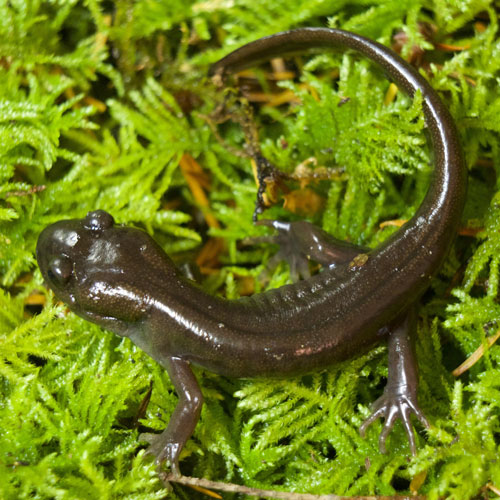Fast Facts
Where they live
- View a map of where they live.
- In Washington State are found west of the Cascades mountains
- Prefer to be under rotting logs or rocks near small streams or springs in damp mountain forests
- They are found up to 1,250 meters in elevation (higher elevation than any other species in this family) on rocky and steep mountain slopes.
- Can be found in drier locations when other species of salamanders are present.
Breeding
- Breeding season is November to March.
- Eggs are most likely laid in underground burrows or under rocks or logs and protected by the female, although there have been a few circumstance when the male has been found protecting eggs.
- Females only lay eggs every other year.
- Eggs hatch into tiny salamanders, skipping the aquatic larval stage.
Cool Biology Facts
- The name vehiculum comes from the word ‘vehicle’ and is a reference to the fact that the male actually carries the female while she clings to his tail during courtship.
- They use chemical cues to choose mates during breeding.
- Western-red backed salamanders do not defend their territories.
Threats
- There are currently no major threats. View their status on the IUCN Red List of Threatened Species.

Amphibians & Reptiles of Washington
Do you know where rattlesnakes live in our state? Or which salamander breathes through its skin? Explore the fascinating diversity of the 26 species of amphibians and 28 reptiles found in Washington state.

